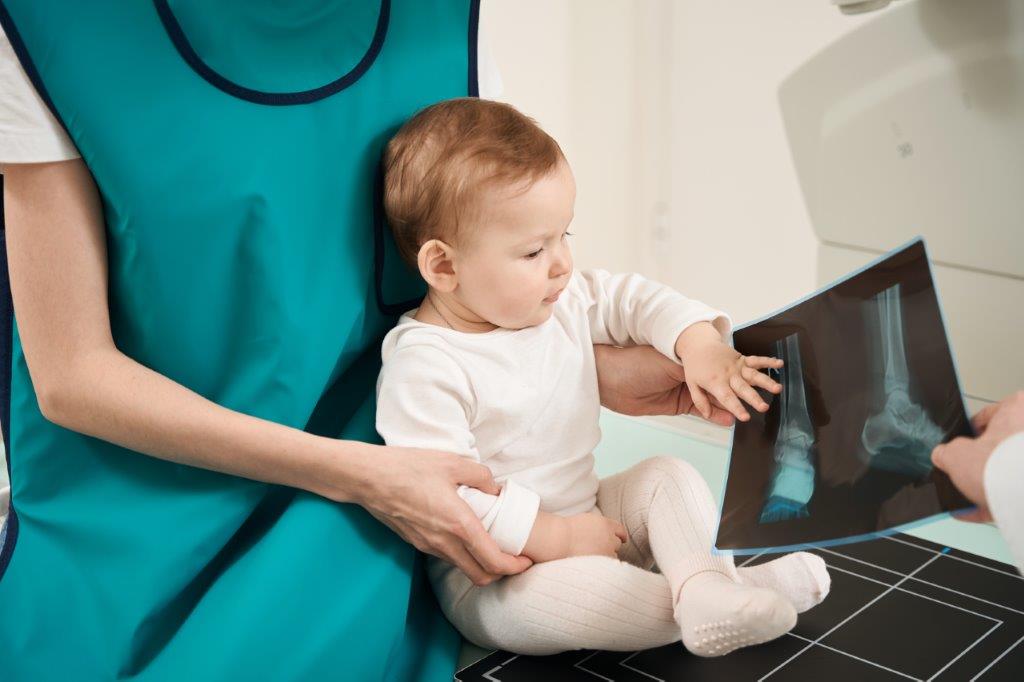Infant and Pediatric Radiology:
Infant and pediatric radiology is a specialized branch of radiological imaging used in the diagnosis and treatment of various diseases in children aged 0-18 years. In this field, techniques suitable for the special anatomical and physiological needs of children and infants are used to enable doctors to make accurate diagnoses and plan effective treatment. This field is of great importance for children’s health because children’s body structures and disease symptoms are different from those of adults and these differences require a special approach.
Importance of Infant and Pediatric Radiology
Infant and pediatric radiology plays a vital role in the early diagnosis and treatment of many diseases in children. The importance of this field rests on a few key points:
- Early Diagnosis: Symptoms of diseases in children may be different from those in adults. Radiological imaging techniques can detect diseases at an early stage and make treatment more effective.
- Correct Diagnosis An accurate diagnosis is critical for proper treatment of the disease. Radiological imaging helps doctors to accurately diagnose diseases.
- Minimally Invasive Methods: Imaging techniques are used in the diagnosis and treatment of many diseases without the need for surgical intervention. This ensures that children experience less trauma.
- Radiation Safety: Modern technologies used in infant and pediatric radiology ensure the safety of children by minimizing the radiation dose.
Radiological Imaging Techniques Used in Infants and Children (Click for detailed information)
The main radiologic imaging techniques used in children are each developed to meet different needs:
- Ultrasound: This method, which creates images of organs and tissues using sound waves, is the most preferred imaging technique in infants and children because it does not contain radiation. It stands out with its harmlessness and wide usage area.
- X-ray: This method, which uses X-rays to create images of bones and tissues, is used to diagnose lung infections, bone fractures and many other diseases. X-rays are often preferred because they provide fast and effective results.
- Computed Tomography (CT): This method, which uses X-rays to create cross-sectional images of organs and tissues, is used to diagnose brain tumors, liver diseases and many other diseases. CT provides detailed and fast results.
- Magnetic Resonance Imaging (MRI): This method, which creates detailed images of organs and tissues using magnetic fields and radio waves, is used to diagnose brain and spine diseases, joint diseases and many other diseases. It is safe because it does not involve radiation and provides detailed images.
Technologies and Safety in Infant and Pediatric Radiology
The devices and methods used in infant and pediatric radiology have made great progress with the development of technology. Especially important steps have been taken in radiation safety. Modern radiological devices allow high-quality images to be obtained with a minimum radiation dose. This significantly reduces the risk of radiation exposure to children.
In addition, radiologists select appropriate imaging techniques, taking into account the special needs of children and babies. This makes the diagnostic process safer and minimizes stress and anxiety for children and their families.
Conclusion:
Infant and pediatric radiology is critical for the protection of children’s health and early diagnosis of diseases. Thanks to special imaging techniques and modern technologies, accurate diagnosis and effective treatment planning are carried out using the safest and most appropriate methods for children’s needs. The development of this field has led to significant advances in child health.
Please contact us for detailed information.

